Introduction to Electronics
and Welcome!
Syllabus / class goals
This is our class website. The home page includes a link to our schedule, and our syllabus.
Aims of the class
- To learn modern, microprocessor-based electronics,
- To experience an engineering project:
- focusing idea
- design
- testing, building a prototype: not final version, not soldered,
- working on a team
- benchmarking
- NOT an EE (Electrical Engineering) "circuit theory" course - this course would go a ways towards putting you at ease, but the EE course is at a different level.
- NOT a class to learn how to repair things - though it may help!
- NOT focussed on the physics of devices - though we will touch on that towards the end of the course.
Teamwork
Inclusiveness vs Homogeneity
Not all of us are
- Catholic
- Right-handed
- US citizens
- Female
- Physics Majors
- Commuters
Among the most unique human traits are:
- Tool use.
- Language ability.
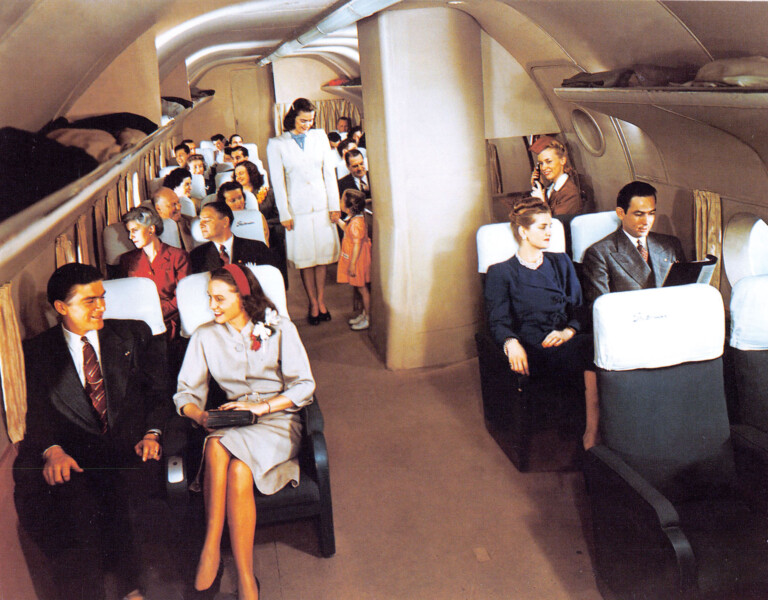 The ability to work cooperatively in non-family groups.
The ability to work cooperatively in non-family groups.
Keep these differences in mind when you:
- form groups,
- plan times and places to study,
- and work on your projects.
Embrace being human, be inclusive!
The Project
Follow the project link on any page...
Some milestones in the history of electronics
- 1700-1900 - scientific study of electricity.
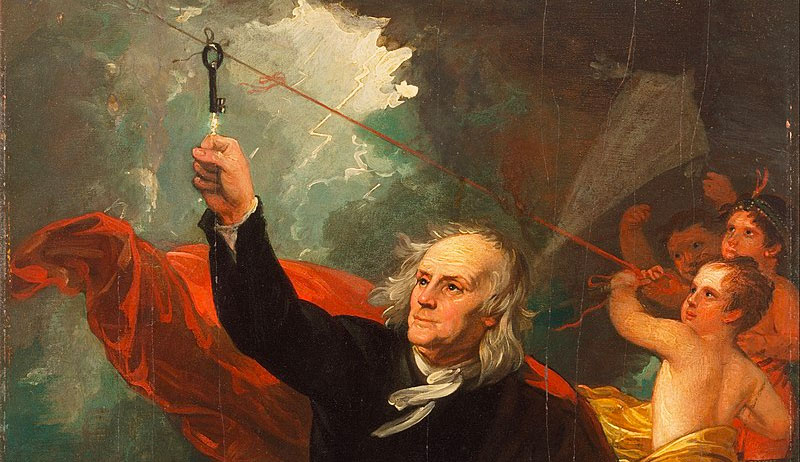
Benjamin Franklin, by Benjamin West (1812) - uwE3TyGK4QGScg at Google Cultural Institute - 1883 - Edison discovers thermionic emission a weak glow when a hot filament is charged negatively, near a positively charged plate inside an incandescent.
- J.J. Thomson identifies the electron and Millikan, 1909 measures its charge.
- Thermionic emission came to be understood as a current of electrons emitted from a hot, electron-emitting anode passing through space to the positively charged cathode. This is the beginning of the Vacuum tube era.
- 1907 - Lee de Forest patents a thermionic grid triode: an amplifier, in which a small voltage can be used to control a current of electrons in a vacuum tube.
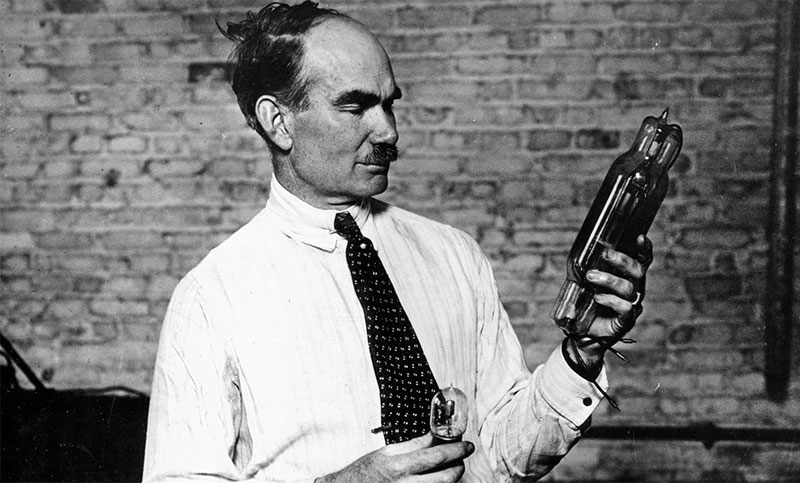
Brittanica.com, Lee de Forest biography - This gives rise to radio broadcasting (and receiving), long distance telephone transmission, television--the cathode ray tube (CRT), and in 1945 the first electronic digital computer: ENIAC
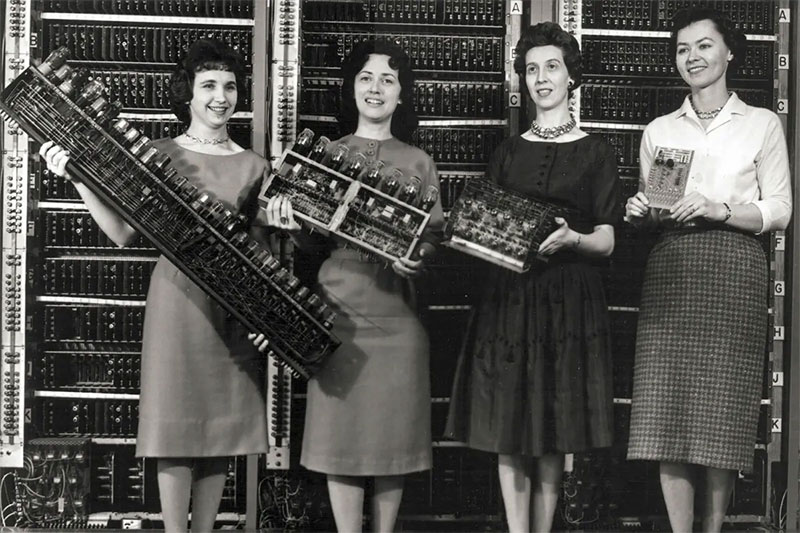
...6 women programmed the first digital computer, DigitalTrends.com, U.S. Army/ARL Technical Library Archives
According to Wikipedia,By the end of its operation in 1956, ENIAC contained 18,000 vacuum tubes, 7,200 crystal diodes, 1,500 relays, 70,000 resistors, 10,000 capacitors, and approximately 5,000,000 hand-soldered joints. [It] consumed 150 kW of electricity.
- 1947 - John Bardeen, W.H. Brattain and W.B. Schockley at Bell Laboratories invent the transistor. The first "solid state" electronics device, it also operated as a voltage-controlled amplifieer, made from germanium - a semi-conductor material which conducts both electrons and also postively charged electron holes.
-
1958-59 - Jack Kilby, Jean Hoerni, and Robert Noyce contributed to the development of the Integrated Circuit: Using selective oxidation of silicon surfaces (masks) transistors could be patterned and grown on a single silicon "chip" smaller than a fingernail. Jack Kilby's IC added gold wires directly to the silicon chip to connect the transistors up into circuits.
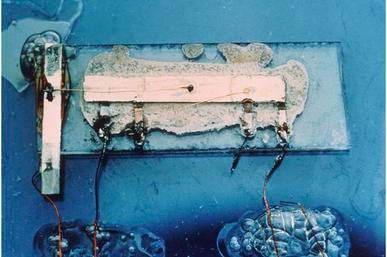
Jack Kilby's original integrated circuit, the world's first IC, Wikimedia, courtesy of Texas Instruments
The first IC's contained circuits with about 10 components on a single chip.
First customer: The U.S. Air Force wanted these compact electronic systems to guide their nuclear tipped Intercontinental Ballistic Missiles (ICBMs). - 1971 - Intel Corporation introduces the first microprocessor a central processor unit (CPU) for a computer with about 1,000 components on a single chip. They also introduce the first computer memory IC.
- Demand grew rapidly, prices dropped, and all kinds of devices were built that were controlled by such small computers: ATMs, auto-focus cameras, programmable thermostates, manufacturing robots.
In 1965 Gordon Moore (then at Fairchild Semiconductors) predicted that the number of transistors on a chip would double every year for at least a decade. Later he revised his prediction to doubling every two years (annual growth rate of +41%).
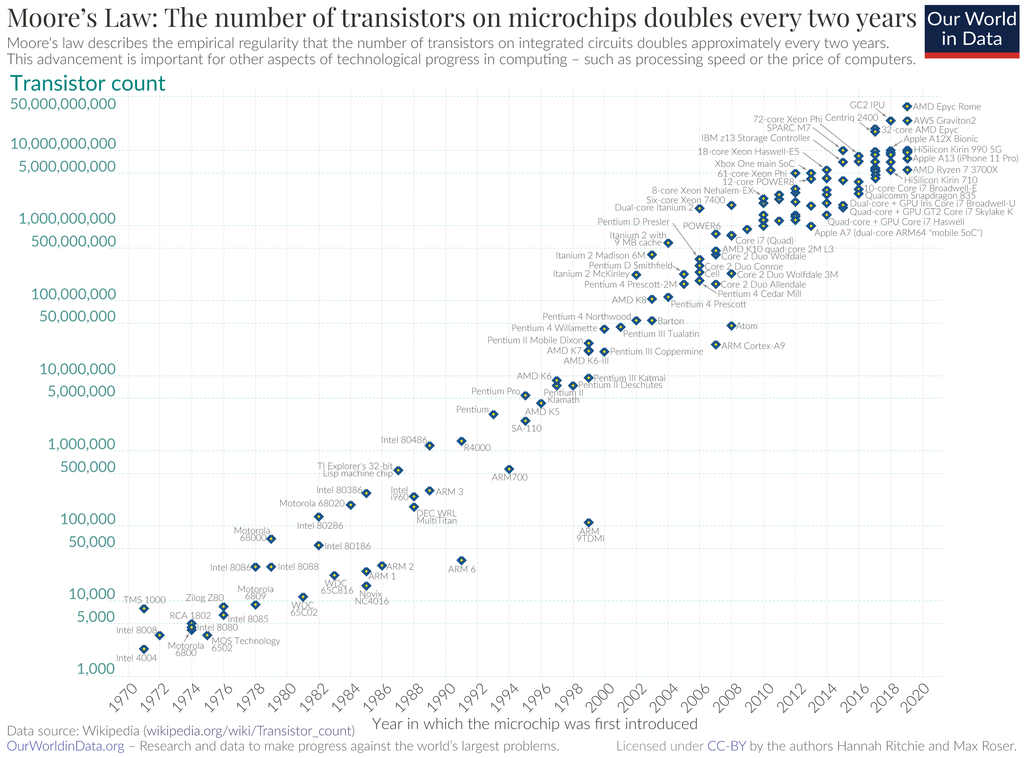
Max Roser, Hannah Ritchie, Our World in Data - 2005 - The first Arduino board, created at the Interactive Design Institute Ivrea, Italy.
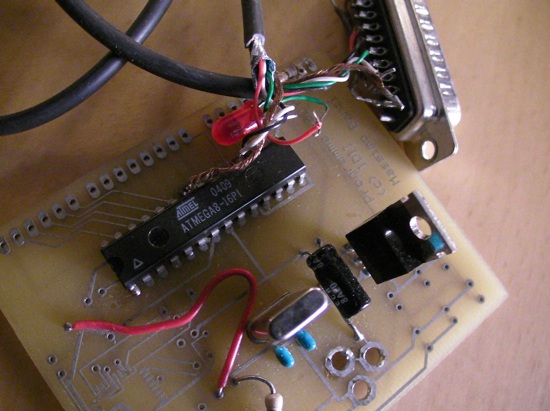
Wikimedia By Philliptorrone - Own work, CC BY-SA 3.0
The Arduino
The design goal of the creators of the Arduino was "to provide a low-cost and easy way for novices and professionals to create devices that interact with their environment using sensors and actuators."
The Arduino consists of
- A relatively CHEAP (\$25 from the foundation, ~\$10 from cloners) board, now open source design, which includes
- An Atmega microcontroller
- Power regulators and connectors--can be powered by a 9V battery
- USB connectors
- Easy connectors for digital and analog inputs and outputs
- A FREE Integrated Development Environment (IDE): Software running on a PC, which allows you to
- write programs in C - a common, high-level programming language
- with extra commands for specific hardware functions, e.g.
analog_read() - do syntax checking and compiling.
- upload program to the Arduino board.